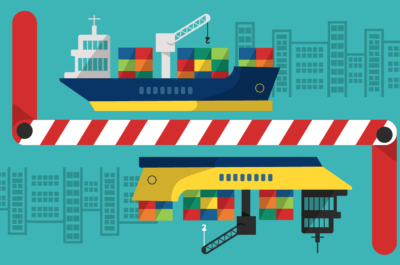Managing Risk in a Global Trade War
Steven Minsky | Mar. 5, 2018

The announcement by U.S. President Donald Trump that his administration would be imposing tariffs on foreign imported steel and aluminum threatens to send the U.S. and its trading partners into a global trade war.
Prices of U.S. domestic steel are up approximately 20 percent since the beginning of 2018. This is due to expectations of “protectionist measures, which could prove a significant drag on steel consumers like the machinery, motor vehicle, and construction industries,” Capital Economics analysts said. “Ironically, the tariffs actually raise the incentives for these other manufacturers to offshore production to avoid the tariffs. Construction firms will have little choice but to pass higher costs onto final consumers.”
5 Steps to Better Risk Assessments
This eBook will walk you through the top 5 best practices for conducting objective enterprise-wide risk assessments. Download this eBook today.
The biggest risk here is retaliation from the United States’ biggest trading partners, such as Canada, Mexico, the European Union, and China on imports in unrelated industries.
Countries impacted by a U.S.-initiated trade war would likely retaliate by imposing tariffs on goods they import from the U.S. Companies should be looking at the top global exporters of steel and aluminum to the U.S. and then look at their respective top imports from the U.S. to get some indication of industry sectors that may be affected by retaliatory actions.
In a trade war, there will be predictable winners and losers even if the net impact to the to the U.S. isn’t observable. Proactive risk assessments are essential to landing on the right side of the fence. Companies with enterprise risk programs would have surfaced this trade war risk in January 2017. By identifying areas of potential concern in advance, companies can have contingency plans in place for mitigating risk fallout from a global trade war. Risk management will help navigate your business forward.
Direct and Indirect Impacts
The Trump administration’s aluminum and steel tariff impositions will have direct and indirect impacts on American businesses. To illustrate this, here are few examples:
Direct impact: The raw material import costs for U.S. producers of machinery and cars may rise. Therefore, goods manufactured outside of the U.S. may become cheaper for consumers in the U.S. Consequently, manufacturing companies in the U.S. may see higher costs of goods sold and reductions in non-domestic sales.
Indirect impact: Production and price changes will require sourcing changes. Sudden shifts that affect supply chains may impact quality and availability since some companies may encounter issues when scrambling to reduce production in some places and ramp it up in others. Operational risk assessments will help identify areas where change can have a positive or negative impact.
Indirect impact: It’s not just about manufacturing. The U.S. budget deficit relies on borrowing considering the new tax cuts passed a few months ago, which may result in rising inflation and indirectly impact interest rates. This will create a shift from lower return large-cap stocks to small-cap stocks as investors seek higher returns and public small-cap stock supply becomes lower.
This will present an advantageous opportunity for investors that use risk management not only defensively, but also to improve their performance and achieve better returns. Operational risk assessments will help identify indirect impacts that are too complex to see in a traditional financial analysis.
“In a trade war, there will be predictable winners and losers.” Check out @LogicManager’s blog on managing risk in a global trade war.
Click to tweet! 
Risk Assessments Are Essential
Companies must be proactively using risk assessments through the multiple layers of management to the front-line supervisor and across business groups to identify areas of possible concern and create contingency plans accordingly. This infrastructure needs to be able to connect the dots between what these assessments are identifying and the impact they may have. The largest impacts may not even be in the area that identifies the risk but in adjacent business areas. This is the most effective way of managing political risk outside of a company’s control.
Risk assessments conducted across locations and geographies will uncover the root cause of changes and prioritize relative impacts to help guide proactive decision-making and preparation. Risk assessments and taxonomy connections to processes, products, suppliers, and customers help keep companies and investors several steps ahead.
Risk management in manufacturing is like a game of chess this way. Those who can think further ahead will win.
Get Your Risk Assessment Excel Template
Download our free excel template for risk assessment best practices to better prioritize and focus your ERM efforts.
